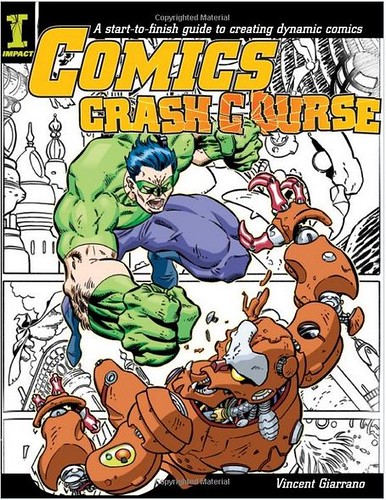But sexism is real and it exists. You can find it in a variety of comic book titles every month. Sometimes it may be slightly hidden, sometimes it may be hard to ignore. Rarely, however, it is as plain as it is in Vincent Giarrano's Comics Crash Course.

Born November 17, 1960, Vincent Giarrano has penciled and inked for a number of comic book titles. In his 2004 how-to book, he may or may not impart the wisdom needed for a career in comics but he certainly and repeatedly unintentionally reveals how sexism works.
For example? Page 25 explains "muscles change shape as you move" which seems plain enough except the muscles are all men's. Pages 26 and 27 gets to women and offers such 'insight' as "For constructing your females use round shapes and graceful curves." While page 25 has you concerned with muscles and action, these two pages on women have you concerned with how to "pose" and the women walk and recline with hands bent down at the wrist. You're told that you can add shoulder blades but no muscles because shoulder blades "are one of the few things that you can add to a woman's back that won't make it look ugly." And to underscore the whole women-are-there-to-be-decoration, you're told, "Look at clothing catalogs to find different photos of women and pick up tips about how they carry themselves."
Right, why bother looking at photos of women athletes when you can grab cheesecake shots?
Page 29 tells you how to draw men's eyes and women's eyes. In which one are you advised on how "to make eyes look sexy."
And on and on it goes, page after page. Men do and women are there to look attractive (actually, they look available -- see especially page 41) and women are regularly called "girls" -- even on page 54 when he's writing of a woman who modeled for face photos.
Rarely will you find sexism flaunted so publicly.
